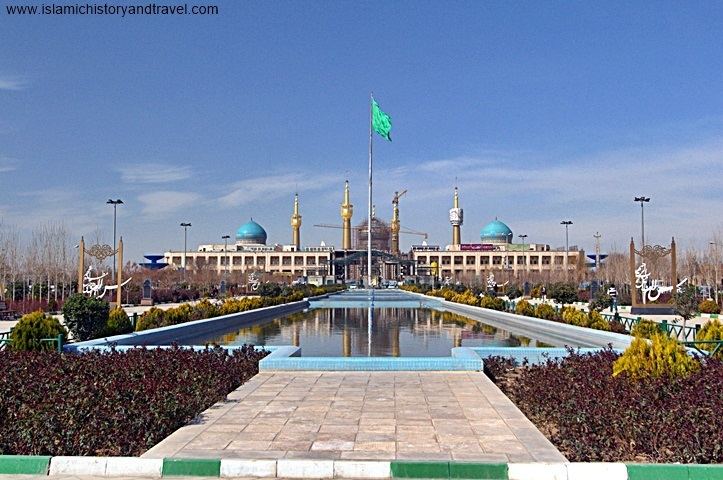Type Mausoleum Completion date 2 June 1992 Beginning date 19 July 1989 | Designer Parviz Moayyed Website www.harammotahar.ir | |
 | ||
Similar Imam Reza shrine, Shah‑Abdol‑Azim shrine, Haram‑e Motahhar Metro Sta, Imamzadeh Saleh - Shemiran, Azadi Tower | ||
The Mausoleum of Ayatollah Khomeini houses the tomb of Ruhollah Khomeini and his family – his wife Khadijeh Saqafi and his second son Ahmad Khomeini – and some political figures like former President Akbar Hashemi Rafsanjani, former Vice President Hassan Habibi, Lieutenant General Ali Sayad Shirazi, Iranian Revolution figure Sadeq Tabatabaei, and MP Marzieh Hadidchi. It is located to the south of Tehran in the Behesht-e Zahra (the Paradise of Zahra) cemetery. Construction commenced in 1989 following Khomeini's death on June 3 of that year. It is still under construction, but when completed will be the centerpiece in a complex spread over 5,000 acres (20 km2), housing a cultural and tourist center, a university for Islamic studies, a seminary, a shopping mall, and a 20,000-car parking lot. The Iranian government has reportedly devoted US$2 billion to this development.
Contents
The site is a place of pilgrimage for followers of Khomeini. It is used symbolically by government figures, and is on occasion visited by foreign dignitaries. Every year, the Khomeini's death anniversary were marked on 4 June at the mausoleum which is attend by governmental officials, foreign ambassadors and people. Khomeini's grandson Ayatollah Seyyed Hassan Khomeini is in charge of caring for the mausoleum. The Haram-e Motahhar Metro Station is the closest metro station to the mausoleum.
Specifications
The architect of the tomb was Mohammed Tehrani. The exterior of the shrine complex is a highly recognizable landmark. It has a gold dome sitting on a high drum, surrounded by four free-standing minarets. The shrine is surrounded by a large rectangular plaza which has been designed to hold vast numbers of visitors. With its size, inclusion of a qibla wall and a maqsura, the tomb resembles a mosque, but has been called an Hussainia.
Inside, Khomeini's sarcophagus is centrally placed under the gilded dome. The dome sits above a transition zone with two layers of clerestories, decorated with stained glass depicting tulips (an Iranian symbol of martyrdom). The dome is supported by eight large marble columns that circle the sarcophagus, that together with other smaller columns support the space frame ceiling. The ceiling is also punctuated by clerestories. The floor and wall surfaces are made of polished white marble. The floor is covered with fine carpets.
Non-Muslims are allowed inside the complex.
Controversies

On June 20, 2009, a suicide bomb attack reportedly occurred near the site of the Mausoleum, according to Iranian state-controlled media. The attack did not damage the mausoleum.
